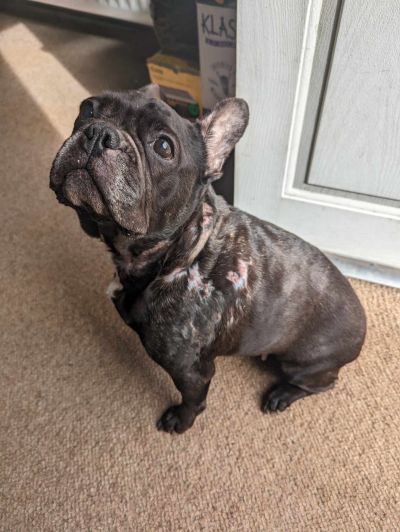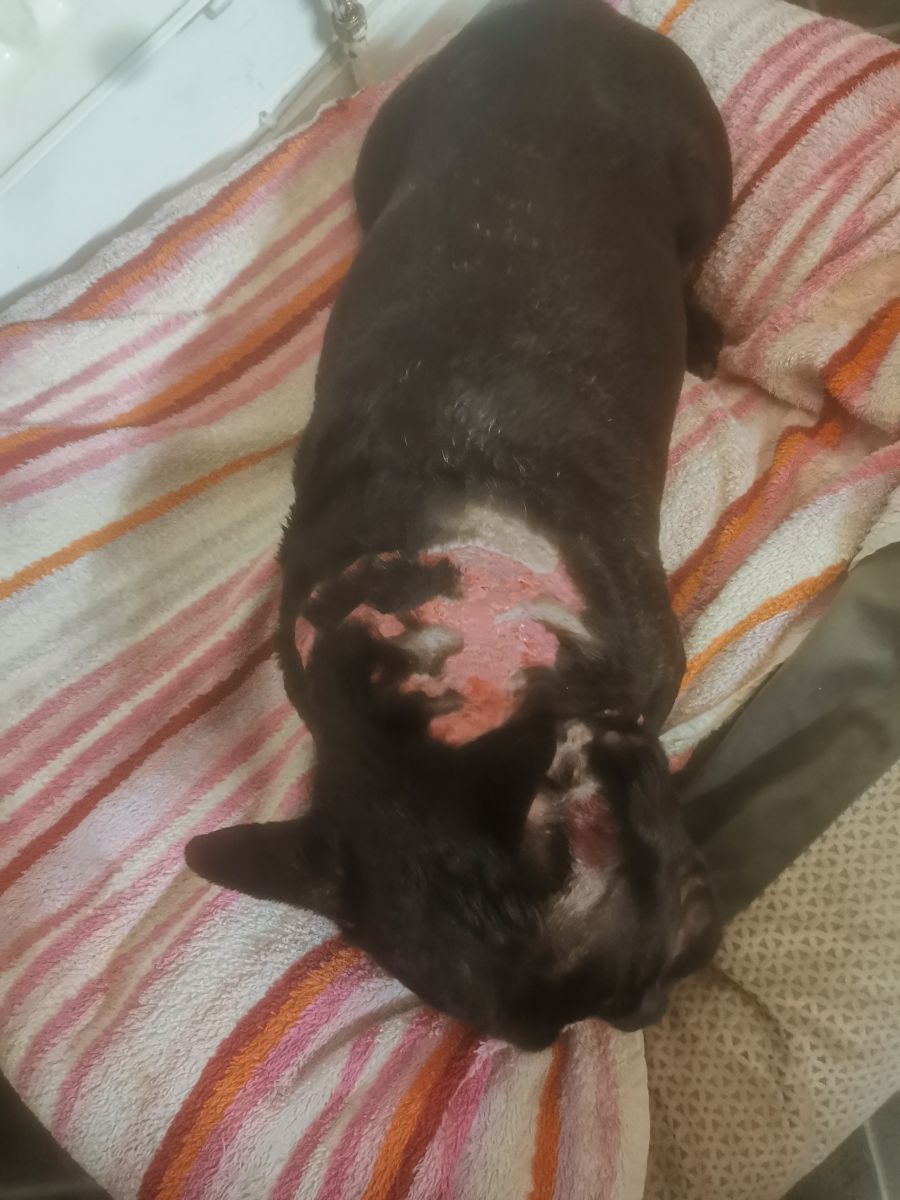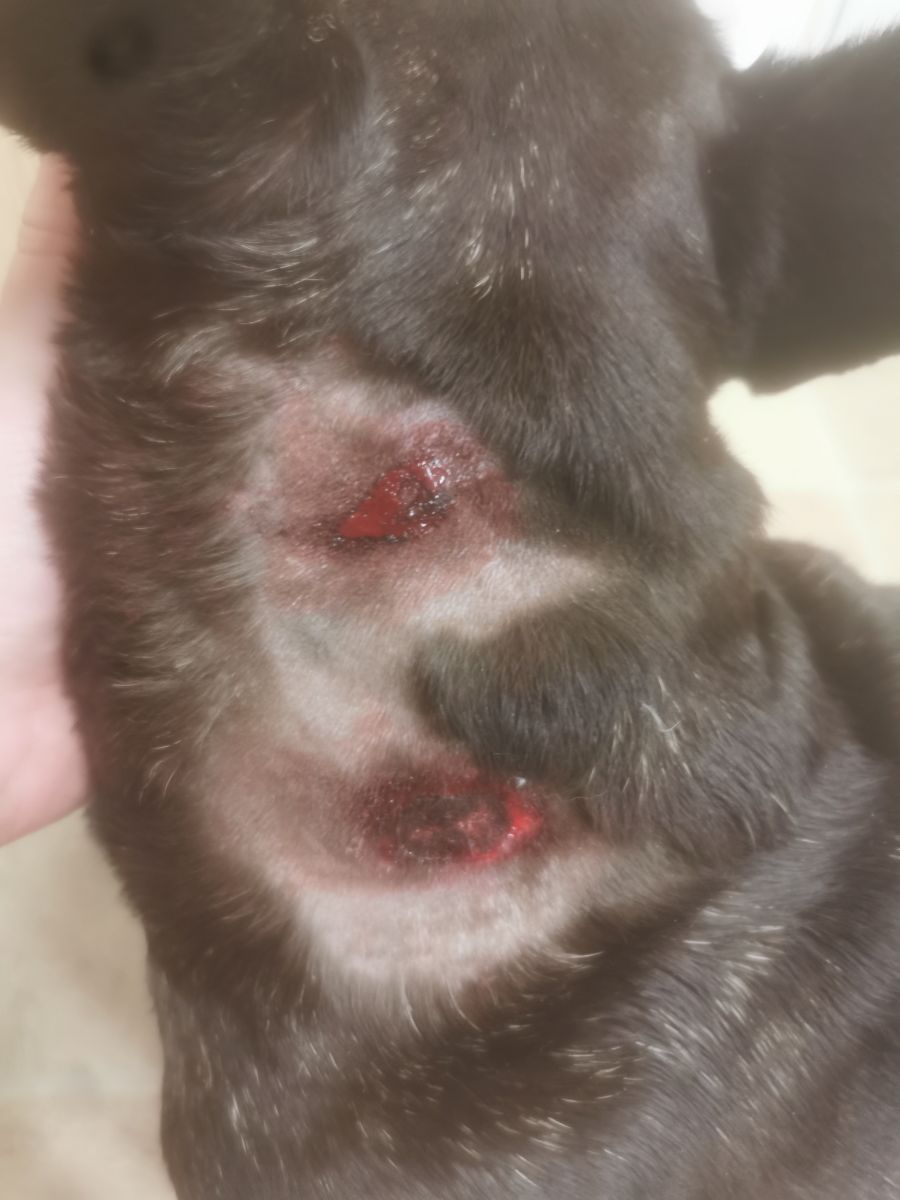
Posted By:
Itchy and sore skin is a common issue amongst our pet dogs and parasites or allergies are often at the centre of these concerns. However, not all sore skin is the same, and some skin lesions can point to underlying health problems within the body. This was the case with Portia the 9 year old French bulldog who was suffering from some very nasty sores all over her neck and legs. When at first her condition did not respond, we needed to look a little deeper and found some interesting results that explained her syndrome.
At the end of last year, very red, hairless crusts started appearing on Portia’s neck. This then started to spread to the inside of her thighs which made her owner concerned enough to book an appointment with the vet. Not only were these skin lesions quite ‘angry’ looking, but around the same time that they had appeared, Portia had been starting to drink and urinate a little more than usual. A steroid and antibiotic cream was prescribed to try and soothe and resolve the sores, whilst a blood test was taken to investigate as to why Portia might recently have been a little thirstier.
Her blood results came back as fairly inconclusive as there were no major changes, however she continued to drink more and her skin lesions were not improving with the cream – in fact they were getting worse, and she had started to lose a lot of hair – poor Portia had to wear a coat to keep her warm and hide her shame! The next stage was a urine sample to further investigate her urination, and a skin biopsy to work out the origin of her crusty sores. Portia’s urine was more diluted than a normal dog’s sample, indicating a problem with her concentrating ability, and biopsies were taken from the worst of Portia’s crusts under local anaesthetic whilst she was sedated.
Later in the week her biopsy results came back revealing an interesting pattern – ‘calcinosis cutis’ – where calcium salts are deposited into the skin, explaining the unusual appearance to her crusts. This pattern occurs in dogs that suffer from the hormonal disease ‘Cushing’s syndrome’ – or hyperadrenocorticism, where a benign tumour in either the pituitary gland (at the base of the brain) or adrenal gland (sitting in front of the kidney) produces too much of the steroid, or ‘stress’ hormone, known as cortisol. Suddenly, Portia’s general condition and symptoms all seemed to make sense, as Cushing’s syndrome can be common in older female dogs that are starting to slow down, and drink more.
To be sure of her Cushing’s diagnosis, a final blood test was needed from Portia – called a ‘low dose dexamethasone suppression’ test, where her blood cortisol was measured at three points throughout the day following an injection of steroid. Portia was very well behaved and patient through all of this! As her blood cortisol was suppressed following the injection, an ultimate diagnosis of Cushing’s could then be achieved, and Portia could start treatment – a capsule of Vetoryl, to suppress her adrenal glands, lower her cortisol levels, and settle her thirst. This would also resolve the deposits of calcium in her skin and eventually relieve her of her sores.
Eventually, after a few monitoring blood tests and dosage increases, good improvements in Portia’s skin were noticed. Portia was starting to get back to looking normal again, much to the delight of her owner, and she didn’t have to cover up in a coat anymore!


.jpeg)

Whilst on my visits I have been having several discussions...
As our feline friends get older there are a few conditions...
Another winter discussion group season is now behind...
©2024 Shepton Veterinary Group Ltd., All rights reserved.
Privacy Policy • Terms & Conditions • Cookie Policy